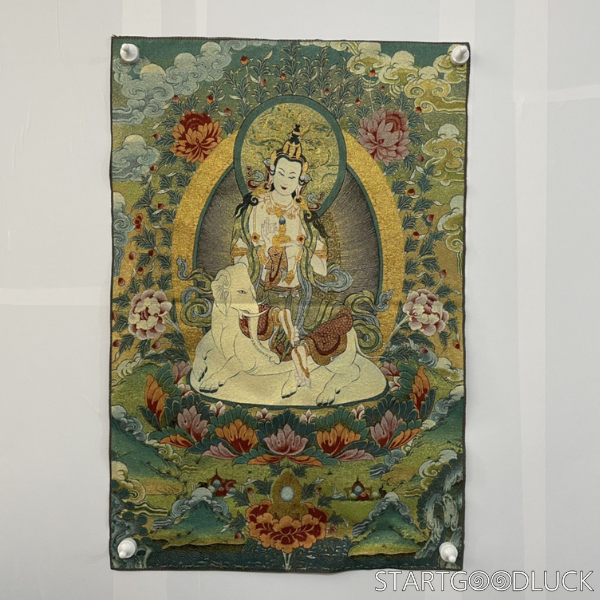This exquisite Thangka painting features Guanyin seated on a serene white elephant throne, crafted with traditional Tibetan embroidery. More than a decorative piece, this hand-embroidered Thangka is a sacred symbol of compassion and protection in Tibetan Buddhism, making it a meaningful addition to spiritual home decor for Western art lovers and those seeking mindfulness through ethnic art.
Origin & Meaning of Guanyin on Elephant
Guanyin (Avalokiteshvara in Sanskrit) is the bodhisattva of infinite compassion, revered across Buddhist traditions. In Tibetan Buddhism, she is often depicted riding a white elephant—an emblem of strength, stability, and the ability to traverse worldly chaos with grace. The elephant also symbolizes Guanyin’s vow to carry beings from suffering to liberation, making this Thangka a powerful reminder of compassion’s transformative power.
Symbolism of the Embroidered Thangka
This Tibetan Thangka embroidery merges artistry with deep cultural heritage. Crafted in the style of traditional Tibetan needlework, it uses silk threads and meticulous stitching to create vivid, three-dimensional imagery. The vibrant colors (gold for enlightenment, green for nature’s harmony, red for compassionate energy) and detailed floral motifs not only showcase Tibetan art but also serve as daily inspiration for kindness, protection, and spiritual resilience.

